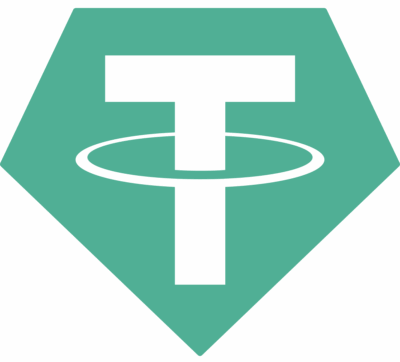We’ve put together a selection of the best USDT wallets based on key factors like security, privacy, and supported blockchains. Always DYOR (Do Your Own Research) before making a choice.
What is USDT?
USDT (Tether) is one of the most widely used stablecoins — a type of cryptocurrency that is pegged to the value of a traditional currency, in this case, the U.S. dollar. One USDT is intended to always equal one USD, making it a popular choice for trading, saving, and transferring value across borders.
As of 2025, USDT has a market capitalization in the tens of billions of dollars, with daily trading volumes often exceeding $50 billion. It’s available on multiple major blockchains, including:
- Ethereum (ERC-20)
- Tron (TRC-20)
- BNB Smart Chain (BEP-20)
- Solana
- Polygon
- And others
What is a USDT Wallet?
A USDT wallet is a digital application or online account that allows you to store, send, receive, and manage USDT tokens. It can be:
- A mobile app
- A desktop program
- A web-based account
- Or even a hardware device
Some wallets also offer advanced features such as staking, lending, or swapping between cryptocurrencies.
Why Do You Need a USDT Wallet?
A USDT wallet is essential for:
- Sending and receiving payments
- Exchanging USDT with other cryptocurrencies
- Storing stable digital value without volatility
Depending on the type of wallet you choose, you may also access decentralized exchanges (DEXs), take out crypto loans, or stake your USDT.
Types of USDT Wallets
USDT wallets can be categorized in many ways, but the most fundamental distinction is between custodial and non-custodial wallets:
Custodial Wallets
- Your funds are managed by a third-party provider (website, mobile app, etc.)
- Login with phone number or email
- Fixed fees, often in USDT
- Low privacy and limited control
- KYC (Know Your Customer) verification is usually required
Non-Custodial Wallets
- Only you control your funds via a private seed phrase
- Variable network fees paid in the native blockchain token (ETH, TRX, etc.)
- Higher privacy and security
- No KYC required
- Access to DEXs and DeFi features
How to Secure Your USDT Wallet
Security depends on the type of wallet you use:
- For custodial wallets:
- Use a strong password
- Enable 2FA (Two-Factor Authentication)
- Complete KYC for added protection
- For non-custodial wallets:
- Back up your 12-word seed phrase in a secure offline location
- Never share your seed phrase
- Avoid saving it digitally or taking screenshots
If you lose your seed phrase, you lose access to your funds forever — there is no password reset.
How to Fund Your USDT Wallet
There are several ways to get USDT into your wallet:
- Buy USDT with a credit or debit card (available in most wallets) — fast and convenient
- Exchange other cryptocurrencies (e.g., BTC or ETH) for USDT using built-in swap features
- Use peer-to-peer (P2P) marketplaces or online exchangers — can offer better rates but may involve higher risk of scams
When using P2P platforms, always verify seller reputation and use escrow protection if available.
How to Choose the Best USDT Wallet
The best USDT wallet for you depends on your needs. Consider the following factors:
- Supported blockchains (e.g., ERC-20 vs TRC-20)
- Security features (2FA, private keys, hardware wallet compatibility)
- User interface (easy to use or advanced)
- Privacy level (custodial vs non-custodial)
- Reputation and reviews
- Extra features (swaps, staking, lending)
- Device compatibility (mobile, desktop, web, hardware)
FAQ
A stablecoin is a cryptocurrency designed to maintain a stable value by being pegged to a traditional asset like the US dollar.
USDT is issued by Tether Limited and is backed by reserves, including cash equivalents and other assets.
USDT is widely used and generally safe when stored in a secure wallet. However, the safety also depends on the wallet provider and your own security practices.
USDT can be used for short-term savings or trading, but it’s not risk-free — stablecoins can carry regulatory and issuer-related risks.
Yes, USDT can be sent anywhere in the world 24/7, often faster and cheaper than traditional banking.
Fees depend on the blockchain used:
ERC-20: higher fees (paid in ETH)
TRC-20: low fees (paid in TRX or sometimes covered by wallet)
In many cases, yes — it’s faster, global, and available 24/7, including weekends and holidays.
